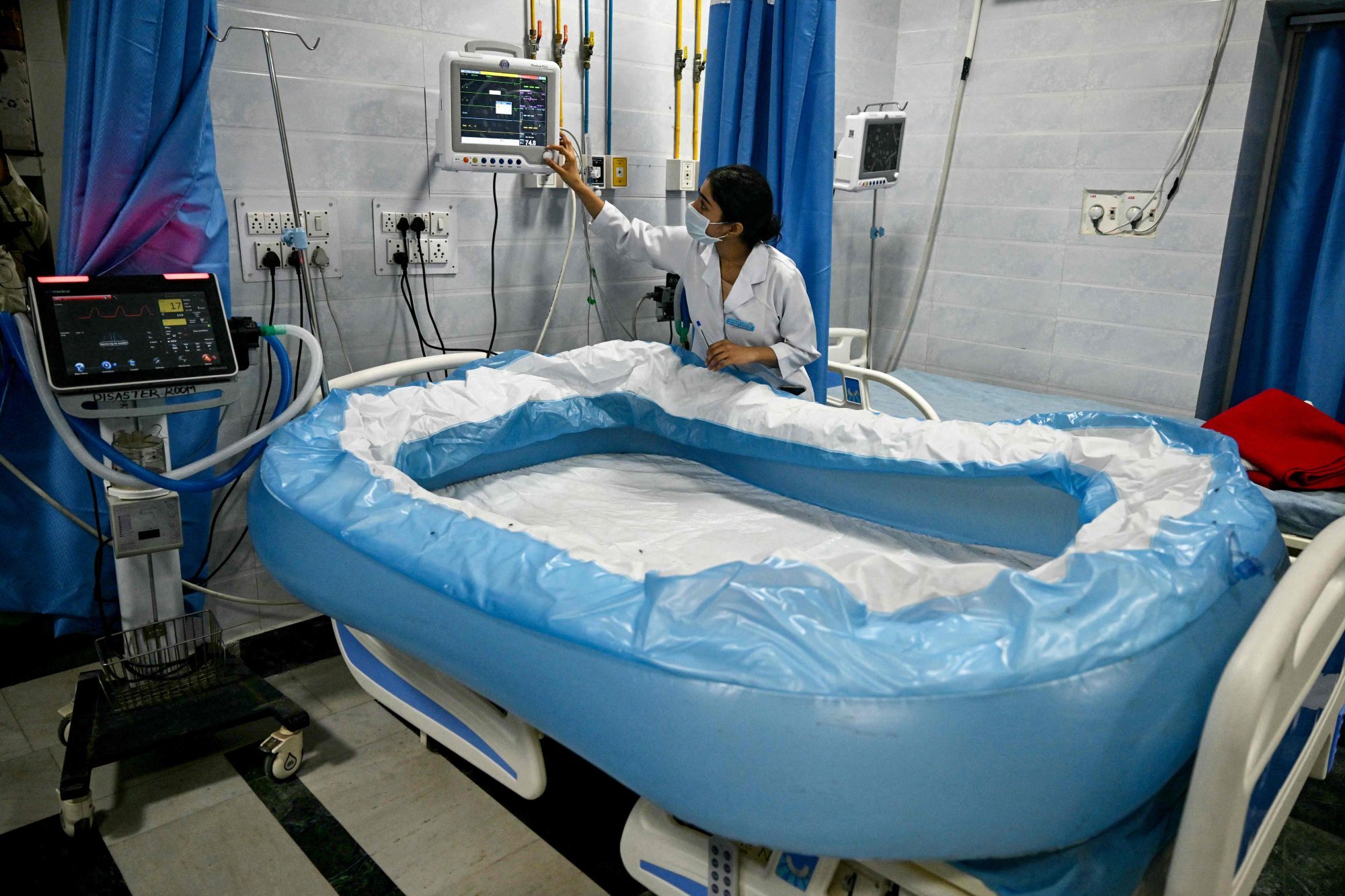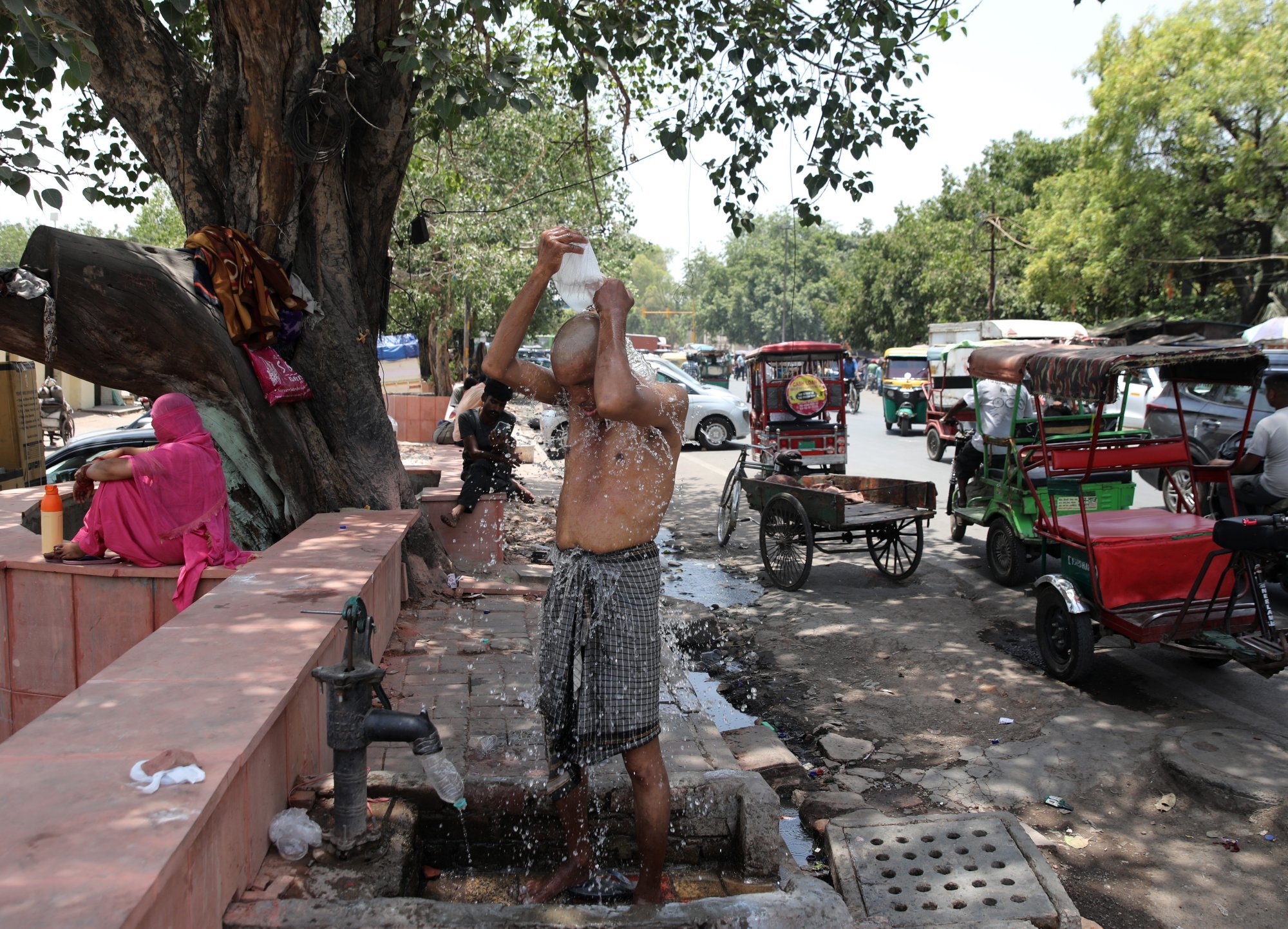Independent estimates suggest between 200,000 and 250,000 people are without shelter in Indian capital, including women, children, and marginalised groups.
The Delhi Urban Shelter Improvement Board manages 195 shelters with a combined capacity of just 16,675 beds, falling far short of the estimated homeless population.
Despite the urgent need for shelter, the board’s demolition of eight shelter homes in March last year left numerous people without a place to live. Critics say the crisis is compounded by ongoing evictions and forced demolitions of slums and homes.
Afzal Khan, a homeless father of a six-year-old child, witnessed his shanty home being razed by the government in 2014. Repeated evictions from makeshift refuges on footpaths have worsened their plight.
“My wife and child depend on me, but I can barely cover our expenses, where should I take them to find respite from this relentless heat?” Khan said. “The government’s inaction has abandoned us, leaving us vulnerable and without a place to live.”
Delhi authorities have put hospitals on high alert to be ready for a surge in heat-related cases.
Shiv Dhayal, a 45-year-old plumber who was admitted to Ram Manohar Lohia Hospital’s heatstroke unit after collapsing while working outside said he suddenly began to shiver before losing consciousness.
“There was no strength left in my body,” he told This Week in Asia.

Dr Seema Balakrishna Wasnik, head of the emergency medicine department at Ram Manohar Lohia Hospital, said patients are often found suffering from high temperatures, heatstroke, dehydration and shock.
“The hospital directs these patients to a designated ‘red zone’ for stabilisation before transferring them to a heatstroke unit for further monitoring and temperature regulation,” she said.
‘Most homeless end up dying’
The plight of Delhi’s homeless during the summer heatwave is a stark reminder of marginalised communities’ vulnerability. Efforts to provide shelter and healthcare remains insufficient, leaving many exposed to the elements.

Heat-related ailments have risen in recent weeks, with Delhi hospitals’ outpatient and emergency departments reporting 10 to 15 per cent more patients and the capital recording one heat-related death.
As the intensity and frequency of heatwaves increases, authorities have come under pressure to prioritise safeguarding the vulnerable.
Provisions for government-run homeless shelters were included in the Delhi government’s Summer Heat Action Plan, announced in April, but social activists argue that these shelters are overcrowded and almost uninhabitable.
“The homeless people living in government shelters prefer to sleep outdoors,” said Sunil Akledia, a rights activist for homeless people and executive director at the Centre for Holistic Development. “These shelters lack basic facilities, structures are dilapidated and sanitation is poor. Many do not even feel safe in them and during the heatwave, it is unbearable to sleep in these shelters.”

Vicky Sharma, general secretary of the Delhi Shelter Home Workers’ Union, criticised the government’s handling of those rendered homeless by shanty demolitions.
“The government is defrauding these people,” he said, describing contracts given to NGOs as inadequate and merely a “formality”. Sharma, who has experienced homelessness himself, highlighted the disparity at Geeta Colony shelter, which has a capacity of 500 but is expected to accommodate 65,000 people.
“Most of these homeless end up dying on the road, many children and women are sexually harassed and most of them end up in human trafficking,” Sharma said.
Muhammad Akhlaq’s story is a stark reminder of the challenges faced by many of India’s poorest during the unforgiving summer months.
The 30-year-old left his hometown of Bijnor in Uttar Pradesh at the age of 13 and travelled to Delhi, where he honed his skills as a painter. But Akhlaq, his wife and their young son found themselves living on a footpath on Mathura Road after the government demolished their home.
“All our shanties were reduced to rubble by the government authorities in Delhi, leaving 50 other families without a roof over their heads,” Akhlaq said.
“We are now homeless, with neither a home nor even a fan … Our sole refuge is a tree, where we seek shelter at night.”


